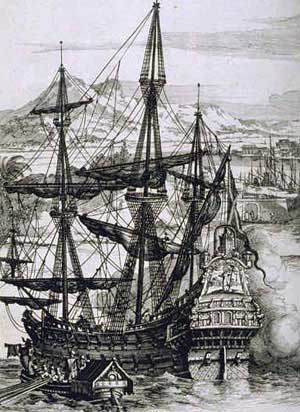Philippine Revolution







The Philippine Revolution (Template:Lang-tl), also called the Tagalog War by the Spanish, was a revolution and subsequent conflict fought between the Katipunan, a Filipino revolutionary society, and the Spanish Empire. The revolution began in August 1896, upon the discovery of the Katipunan, an anti-colonial secret organization. The conflict led to the end of Spanish colonial rule in the Philippines.
Background[edit]
The roots of the Philippine Revolution can be traced back to the Propaganda Movement, a campaign for political reforms in the Philippines that began in the late 19th century. The movement was spearheaded by Filipino expatriates in Europe, including José Rizal, Marcelo H. del Pilar, and Graciano López Jaena. Their efforts, however, failed to bring about significant changes, leading to the formation of the more radical Katipunan.
Katipunan[edit]
The Katipunan was founded by Andrés Bonifacio, Ladislao Diwa, and Teodoro Plata on July 7, 1892. The organization aimed to gain independence from Spain through armed revolt. The Katipunan spread rapidly throughout the archipelago, attracting thousands of members.
Outbreak of the Revolution[edit]
The revolution began in earnest on August 23, 1896, when Bonifacio and his followers tore their cedulas (residence certificates) in a symbolic act of defiance against Spanish rule, an event known as the Cry of Pugad Lawin. The Spanish authorities soon discovered the Katipunan's plans, leading to mass arrests and the start of open hostilities.
Major Battles[edit]
Several key battles took place during the revolution, including the Battle of San Juan del Monte, the Battle of Imus, and the Battle of Binakayan-Dalahican. These battles saw varying degrees of success for the Filipino revolutionaries.
Leadership and Factionalism[edit]
The leadership of the revolution saw significant changes, particularly after the Tejeros Convention in March 1897, where Emilio Aguinaldo was elected as the president of a revolutionary government, sidelining Bonifacio. This led to internal conflicts and the eventual execution of Bonifacio.
Biak-na-Bato and Truce[edit]
In late 1897, the revolutionaries and the Spanish government signed the Pact of Biak-na-Bato, which called for a truce and the exile of Aguinaldo and other leaders to Hong Kong. However, the truce was short-lived, and hostilities resumed in 1898.
Spanish-American War and Philippine Independence[edit]
The outbreak of the Spanish-American War in April 1898 provided a new opportunity for the Filipino revolutionaries. Aguinaldo returned to the Philippines with the help of the United States and declared Philippine independence on June 12, 1898. However, the subsequent Treaty of Paris (1898) ceded the Philippines to the United States, leading to the Philippine-American War.
Legacy[edit]
The Philippine Revolution is considered a pivotal event in Philippine history, marking the end of over 300 years of Spanish colonial rule. It laid the groundwork for the establishment of the First Philippine Republic and inspired future generations of Filipinos in their struggle for independence.
Related Pages[edit]
- Katipunan
- Andrés Bonifacio
- Emilio Aguinaldo
- Cry of Pugad Lawin
- Tejeros Convention
- Pact of Biak-na-Bato
- Spanish-American War
- Philippine-American War
- First Philippine Republic
This article is a Philippine history-related stub. You can help WikiMD by expanding it!
Ad. Transform your life with W8MD's Budget GLP-1 injections from $75


W8MD offers a medical weight loss program to lose weight in Philadelphia. Our physician-supervised medical weight loss provides:
- Weight loss injections in NYC (generic and brand names):
- Zepbound / Mounjaro, Wegovy / Ozempic, Saxenda
- Most insurances accepted or discounted self-pay rates. We will obtain insurance prior authorizations if needed.
- Generic GLP1 weight loss injections from $75 for the starting dose.
- Also offer prescription weight loss medications including Phentermine, Qsymia, Diethylpropion, Contrave etc.
NYC weight loss doctor appointmentsNYC weight loss doctor appointments
Start your NYC weight loss journey today at our NYC medical weight loss and Philadelphia medical weight loss clinics.
- Call 718-946-5500 to lose weight in NYC or for medical weight loss in Philadelphia 215-676-2334.
- Tags:NYC medical weight loss, Philadelphia lose weight Zepbound NYC, Budget GLP1 weight loss injections, Wegovy Philadelphia, Wegovy NYC, Philadelphia medical weight loss, Brookly weight loss and Wegovy NYC
|
WikiMD's Wellness Encyclopedia |
| Let Food Be Thy Medicine Medicine Thy Food - Hippocrates |
Medical Disclaimer: WikiMD is not a substitute for professional medical advice. The information on WikiMD is provided as an information resource only, may be incorrect, outdated or misleading, and is not to be used or relied on for any diagnostic or treatment purposes. Please consult your health care provider before making any healthcare decisions or for guidance about a specific medical condition. WikiMD expressly disclaims responsibility, and shall have no liability, for any damages, loss, injury, or liability whatsoever suffered as a result of your reliance on the information contained in this site. By visiting this site you agree to the foregoing terms and conditions, which may from time to time be changed or supplemented by WikiMD. If you do not agree to the foregoing terms and conditions, you should not enter or use this site. See full disclaimer.
Credits:Most images are courtesy of Wikimedia commons, and templates, categories Wikipedia, licensed under CC BY SA or similar.
Translate this page: - East Asian
中文,
日本,
한국어,
South Asian
हिन्दी,
தமிழ்,
తెలుగు,
Urdu,
ಕನ್ನಡ,
Southeast Asian
Indonesian,
Vietnamese,
Thai,
မြန်မာဘာသာ,
বাংলা
European
español,
Deutsch,
français,
Greek,
português do Brasil,
polski,
română,
русский,
Nederlands,
norsk,
svenska,
suomi,
Italian
Middle Eastern & African
عربى,
Turkish,
Persian,
Hebrew,
Afrikaans,
isiZulu,
Kiswahili,
Other
Bulgarian,
Hungarian,
Czech,
Swedish,
മലയാളം,
मराठी,
ਪੰਜਾਬੀ,
ગુજરાતી,
Portuguese,
Ukrainian